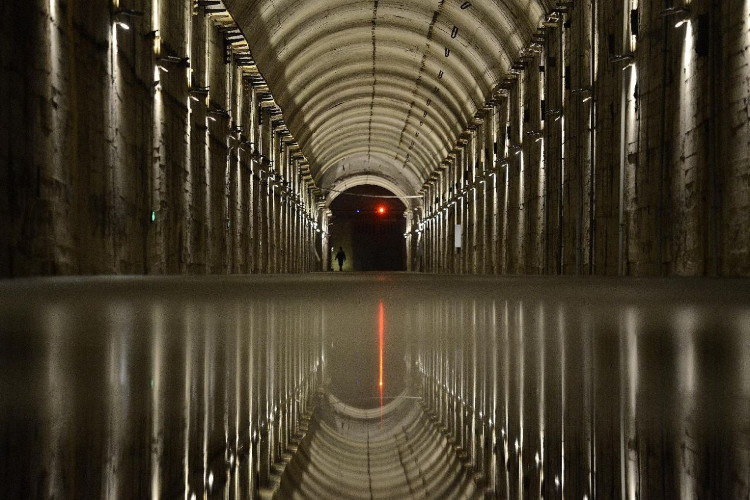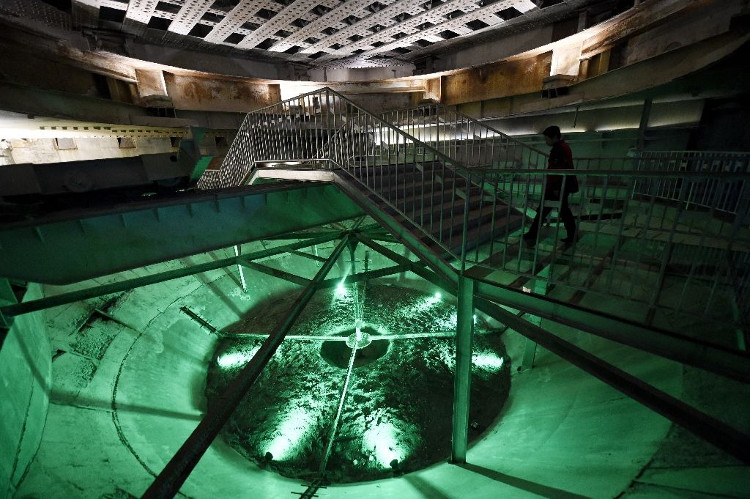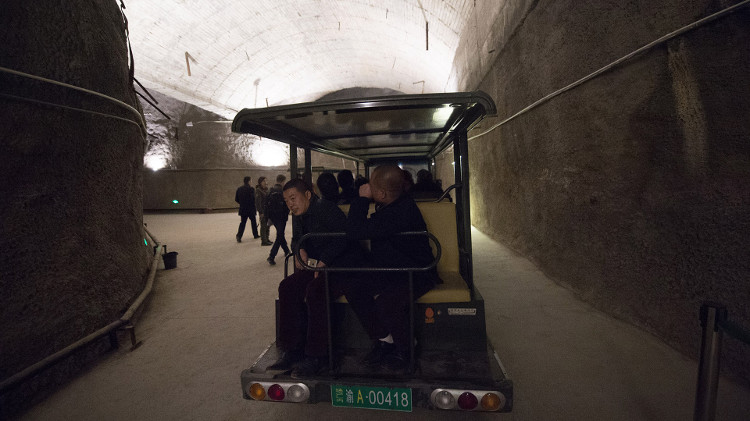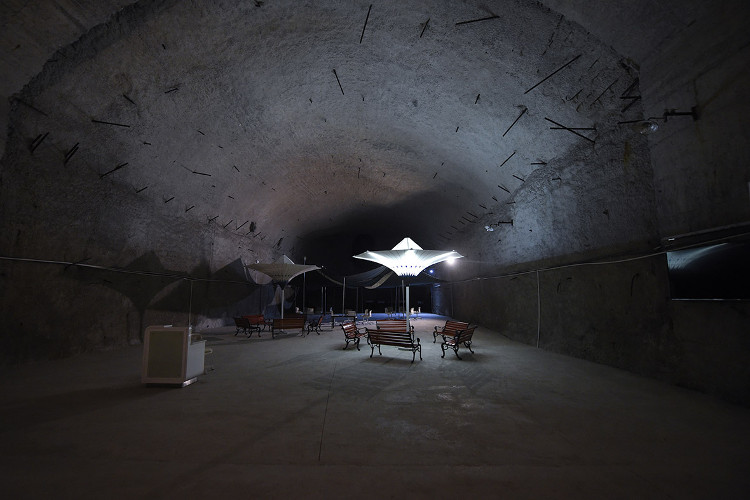Inside China's huge nuclear tunnel since the Cold War
Let's visit the world's largest tunnel system, can withstand thousands of tons of explosives or a powerful earthquake of level 8, can even withstand atomic bombs and hydrogen bombs.
Deep beneath the mountains of central China, the largest network of giant tunnels ever built is the country's secret nuclear base.
This work was built in 1967, three years after China successfully tested its first nuclear weapon, in an attempt to keep up with the arms race with the United States and the Soviet Union.

Main corridor from the entrance of the base zone.(Photo: Wang Zhao / AFP).

One of the base camp's nuclear testing sites.(Photo: Wang Zhao / AFP).
This facility is 100,000 square meters, equivalent to 14 football fields, equivalent to 600 Olympic-standard swimming pools, built in 17 years by 60,000 soldiers around the clock. It is the world's largest artificial tunnel system, lasting up to 20 km.
Located in the town of Bai Dao near the Chongqing urban area, this place is year round covered with mist and volcanic dust, along with tarpaulins surrounding it, making it almost erased from the map because There are no residents.

Tourists are taking a tour of the place that once brought China's nuclear ambitions.(Photo: Wang Zhao / AFP).

The interior is always dark and the air smells moldy.(Photo: Wang Zhao / AFP).
The construction of this tunnel system costs up to 80 billion Yuan (about US $ 11.5 billion), with the ambition of developing the Chinese government's nuclear weapons.
However, in 1979, when China established diplomatic relations with the United States and tensions with the Soviet Union also eased, it was no longer used and officially abandoned since 1984. in 2002 and officially opened to tourists in 2010, finally welcomed foreign visitors at the end of 2016.
More than 300,000 Chinese tourists came to this place while less than 100 foreign tourists came here. Surrounded by darkness and humid air, visitors like to be back in the Cold War era.
Only 10% of corridors and rooms are open to visitors, including spaces from floors 6 to 9, including control centers and nuclear reactors. The devices here are replaced with real-life models and simulate activities that have ever happened.

The entrance to the world's largest underground base at Bach Dao, near Chongqing city.(Photo: Wang Zhao / AFP).

Tourists taking photos of the construction were built in 1967. (Photo: Wang Zhao / AFP).

The system of rooms is connected by corridors of up to 20km.(Photo: Wang Zhao / AFP).
Opening the door to tourists is somewhat comforting for thousands of soldiers who have taken the effort to create this work. According to data from tour guides, a total of 76 people died during construction.
Mr. Chen Huaiwen, 70, a veteran who participated in the construction of the cellar, said: "A person will proceed with the blasting of the rock, then we will all rush to drill the broken rocks and This mountain may collapse anytime, many of my comrades have died here. "
"We slept on thin straw beds, no one was allowed to sleep before 1 am. The armed police stood guard around the construction site and we were forced to complete it within a short time."

A circular pipe corridor was built entirely by soldiers.(Photo: Wang Zhao / AFP).

One of the base camp's nuclear testing sites.(Photo: Wang Zhao / AFP).

A control room in the base area.(Photo: Wang Zhao / AFP).
"The food is very simple, only rice and beans, there will be meat on two sessions a week. Many people have pulmonary tuberculosis due to dust from the breakdown process, that is not to mention many toxic substances from explosives, smoke. and air pollution ".
Another veteran shared in tears, Li Gaoyun said: "It has been 42 years since we returned to this place, like many other soldiers, I did not receive pensions or social benefits after completing This project has owed us a lot, blood, sweat and youth ".
- Nuclear waste bunker collapse in the US
- The huge Soviet tunnel that dug into the Arctic is melting
- Discover huge X-ray tunnel in the universe
- Decode the largest non-nuclear explosion in the history of the world
- Clay tunnel with spectacular sculptures in Da Lat
- The mysterious 'tunnel maze' near the famous ladder pyramid
- The truth of the father building a tunnel through the cliff to commemorate his drowned daughter
- In 1983, mankind stood close to the brink of nuclear war, but this determined man stopped it
- The Sun storm nearly ignited nuclear war
- The United States announced hundreds of videos of top secret nuclear bombs
- Explanation of the mysterious tunnel helps
- The world famous 'haunted' tunnels
 'Fine laughs' - Scary and painful torture in ancient times
'Fine laughs' - Scary and painful torture in ancient times The sequence of numbers 142857 of the Egyptian pyramids is known as the strangest number in the world - Why?
The sequence of numbers 142857 of the Egyptian pyramids is known as the strangest number in the world - Why? History of the iron
History of the iron What is alum?
What is alum?